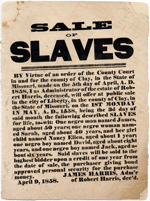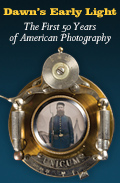Catalogues Raisonnés & more
A catalogue raisonné is not an exhibition catalog! Learn what they are and how to find them at Cornell here.
Exhibition histories may be found in some of the following sources: secondary literature (scholarly monographs and articles), exhibition catalogs, and—at least partial listings—in artist dictionaries, such as Bénézit (part of Oxford Art Online).
More about Bénézit in this video.
Museums
-
The Story of the Beautiful: Freer, Whistler & Their Points of ContactSmithsonian Institution and Wayne State University Libraries
-
Our America: The Latino Presence in American ArtSmithsonian Institution, American Art Museum
Educational Institutions
-
America's Reconstruction: People and Politics After the Civil WarUniversity of Houston
-
Historic Threads: Three Centuries of ClothingColonial Williamsburg, via history.org
-
Documenting the Gilded Age: New York City Exhibitions at the Turn of the CenturyThe art exhibitions of galleries, clubs, and associations in the late nineteenth and early twentieth centuries chronicle the emergence of New York City as an international center for the production of art and the art market. New York Art Resources Consortium
-
Monuments Men: On the Front Line to Save Europe's Art, 1942–1946Smithsonian Institution: Archives of American Art
How to find exhibition catalogs
It’s easy enough to search for books in the catalog using the term exhibition (preferred over exhibit). The term catalog is not always used to describe these materials, but if you do use it in your search, be sure to look for both catalog and catalogue. Check that the book you've found is actually an exhibition catalog. Sometimes, the term catalog actually describes an auction catalog, which can be a good source for images, but is not usually a work that presents scholarly, curatorial information in the same way that an exhibition catalog would. Here are some subject headings that describe exhibition catalogs:
Cropsey, Jasper Francis, 1823-1900 --Catalogs
Cropsey, Jasper Francis, 1823-1900 --Exhibitions
Hudson River school of landscape painting --Influence --Exhibitions
Amon Carter Museum of American Art --Exhibitions
Children --Portraits --Exhibitions
Art auctions --New York (State) --New York --Catalogs
Libraries
-
Dream of FlightLibrary of Congress
-
Rivers, Edens, Empires: Lewis & Clark and the Revealing of AmericaLibrary of Congress
-
The Melting Pot: Russian Jewish New YorkColumbia University Libraries
-
Off the Pedestal: Images of Women in Victorian Broadsides, Ephemera and "Fast" LiteratureLilly Library, Indiana University
-
The World Awheel: Early Cycling BooksLilly Library, Indiana University
-
The Grandeur of Life: A Celebration of Charles Darwin and Origin of the SpeciesLinda Hall Library (Kansas City, MO)
-
Bubbles, Panics & Crashes--A Century of Financial Crises, 1830s-1930sHarvard Business School, Baker Library
Historical Societies
-
John Rogers: American StoriesNew-York Historical Society: John Rogers (1829-1904) was unquestionably the most popular sculptor of the 19th century, selling over 80,000 narrative figural groups in plaster in his lifetime. More than any other artist of his era, Rogers reached Americans en masse, addressing the issues that shaped their lives and defined the American experience.
-
Beauty, Virtue & Vice: Images of Women in Nineteenth-Century American PrintsAmerican Antiquarian Society
-
Photographing the American IndianPortraits of Native Americans, 1860-1913, from the collections of the Massachusetts Historical Society
-
The Work of Giants: The Chinese and the Building of the First Transcontinental RailroadChinese Historical Society of America
-
Doing Hard Time: Historic Nebraska Mug ShotsNebraska State Historical Society
-
Jamestown, Québec, Santa Fe:Three North American BeginningsSmithsonian Institution, National Museum of American History
-
The Great Chicago FireChicago Historical Society and Northwestern University
-
The Dramas of HaymarketChicago Historical Society
Cornell Library Online Exhibitions
The Division of Rare and Manuscript Collections also hosts the Hirshland Gallery, where a regular schedule of exhibitions highlights important individual collections. Here are some online versions of past exhibitions that provide source material for the study of nineteenth-century American art:










